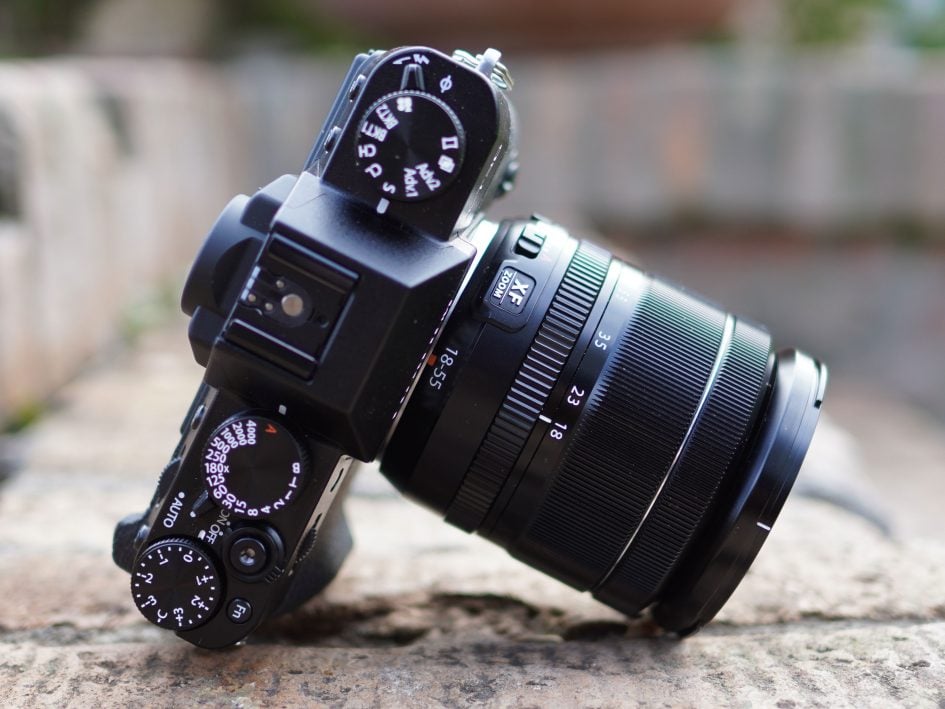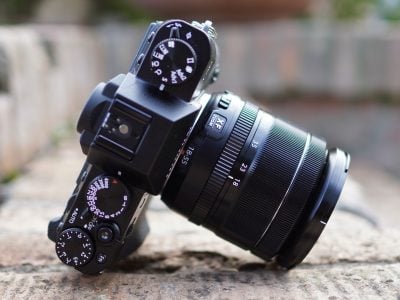Fujifilm XT30 review
-
-
Written by Gordon Laing
Verdict
The Fujifilm X-T30 follows a tried-and-trusted recipe now on its third generation, delivering the same sensor, processing and autofocus of the flagship model, in this case the X-T3, in a smaller, lighter and much more affordable body. As such it becomes the second body to feature Fujifilm’s latest 26 Megapixel / APSC / X-Trans IV sensor with phase-detect autofocus across the entire frame and electronic bursts up to 30fps with optional pre-burst capture too.
As you’d expect, the output essentially matches the X-T3, delivering great looking photos out-of-camera, and the 4k video up to 30p is amongst the best of its peer group. 1080 footage, often neglected in the 4k world, also looks great. Fujifilm’s also done a lot of work on its AF system, with the face and eye detection now working better than before, and the wireless connectivity is much more reliable too. I was also pleased to find the USB port doubling as a headphone output and the HDMI outputting 4k in 10-bit 4:2:2 to an external recorder, both unusual at this price point.
On the downside there’s no built-in stabilisation, there’s a single card slot that only supports UHS I speeds, the movie clips are short, limited to just 10 minutes of 4k or 15 in 1080p, the viewfinder image is smaller than most rivals, the battery life is fairly short, the movie autofocus isn’t as decisive as Sony or Canon, and vloggers will wish the screen faced forward. Some of these can be attributed to the size of the body and it’s also true to say there’s not much to wrap your fingers around, the tightly arranged ports may block each other, and the repositioned Q menu button gets pressed by accident far too often. But equally it’s designed to be a small camera, aimed at travel and portability for which it excels. There’ll always be physical compromises with a compact body.

Fujifilm X-T30 vs X-T3
So what do you get if you spend $500 or 500 pounds extra on the X-T3? Well, the flagship body is larger, more comfortable and weatherproofed, it has twin UHS-II card slots, it’ll film 4k up to 60p, as well as extending 30p clips to half an hour, it shoots faster with a 1/8000 shutter and 11fps mechanical bursts, has proper 3.5mm microphone and headphone jacks, a much larger and more detailed viewfinder and a screen that can angle out sideways a little for easier framing in the portrait orientation at low angles, albeit not going as far as to face forward. It’s a lovely camera, but the X-T30 matches its photo and movie quality, albeit up to 30p with shorter clips, in a more portable body while saving you 500 bucks which could be spent on lenses, travel, or occasional coffee donations to a deserving gear vlogger. See my Fujifilm X-T3 review for more details.
Fujifilm X-T30 vs Sony A6400
For roughly the same price, there’s also Sony’s A6400 to consider. In its favour the A6400 has a larger viewfinder image, a deeper grip, weather-sealing, a screen that can face-forward, more confident movie autofocus, and unlimited 4k recording times. The X-T30 fights back with a headphone output, 10-bit 4:2:2 over HDMI and to my own preference, better controls and more attractive output, although you may prefer the Sony in these regards. I think the X-T30’s real trump card over the Sony though is access to a far broader selection of native APSC lenses. Both are however really strong bodies for both stills and video. See my Sony A6400 review for more details!
Fujifilm X-T30 final verdict
Ultimately I really enjoyed my time with the Fujifilm X-T30 and while the small body resulted in a few annoyances, I appreciated its portability especially coupled with one of the smaller lenses in the system. It’s perfect for travel and very discreet for street photography too. As a fan of the X-T3, I knew I’d like the images straight out of camera and I’m also fond of Fujifilm’s controls and styling. I appreciate image processing and control preferences are personal, but there’s no arguing with the X-system’s lens catalogue which simply has far greater choice than rival APSC systems from Sony and Canon, especially when it comes to primes. For me it’s this combination of effortless photo quality, attractive styling and an unrivalled lens selection in its peer group that makes the X-system so compelling. So if you want access to all this in a compact body at a mid-range price, the X-T30 comes Highly Recommended.
Check prices on the Fujifilm X-T30 II at B&H, Amazon, Adorama, WEX UK or Calumet.de. Alternatively get yourself a copy of my In Camera book, an official Cameralabs T-shirt or mug, or treat me to a coffee! Thanks!



